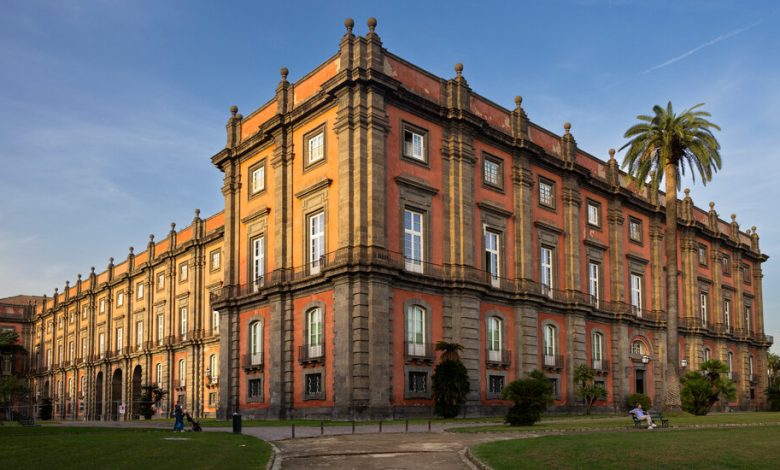Italy Searches for Museum Leaders, With Nationalism in the Air

For the past several weeks, dozens of candidates have been facing a five-person committee in a dark, book-lined room at Italy’s Culture Ministry, hoping to convince the panel that they should be selected to direct some of Italy’s top museums, including the Uffizi in Florence, the Capodimonte in Naples, the Brera in Milan and seven others.
Ten candidates are up for each job. The committee will whittle each list down to three, based on the interview and the candidates’ knowledge of a host of issues — new technologies, cultural heritage legislation, sponsorship opportunities — as well as their vision for each museum. The final selection will be made sometime next month by Gennaro Sangiuliano, Italy’s culture minister, and Massimo Osanna, the ministry’s director overseeing museums.
It has been eight years since a reform granted some Italian arts institutions greater autonomy and opened up the position of museum director to people from outside the culture ministry’s ranks. The then-culture minister, Dario Franceschini, sought applications from foreigners to shake up the museum sector, even publishing the job advertisement in The Economist magazine. At the first 20 museums affected by the reform, Franceschini appointed seven foreigners and several Italians with experience abroad, who were hired for a four-year contract, that could be renewed once.
“It was an opening that brought fresh air into the whole system,” said Luca Giuliani, an archaeologist who was part of the 2015 committee that selected those directors. However, many Italian art historians and archaeologists had felt snubbed, and several colleagues stopped speaking to him, he said.
This time around, the mood is different. Though the new minister, who is part of a nationalist, right-wing government, has said that nationality was not an issue, of the 90-odd candidates shortlisted (some are in the running for more than one museum), only a handful have significant experience outside Italy. And two of the foreigners up for jobs already run two top Italian museums.
Given the government’s political bent, “it would have been a surprise if they had been looking for international candidates,” Giuliani said.
In an email, Sangiuliano said that there were “no preclusions on nationality.” What mattered, he added, was that a “director had to be good and have ideas.”
Yet culture experts say that the prestige and perks of running an Italian museum — which include some of the world’s most celebrated arts institutions — are dampened by downsides including lower salaries compared to comparably important museums abroad, limited contracts and the many headaches of Italian bureaucracy.
“I think that a colleague that has worked in the United States, or in England and Germany, might wonder whether it’s worth it,” said Enrico Parlato, the president of CUNSTA, an Italian association of university art historians. “To be crude about it, the salaries cannot compete,” he added.
Critics also say that by giving the culture minister the last word over the choice of directors, the 2015 reform also gave the minister outsized influence, including over diplomatic questions like loaning rare works abroad, or dictating the content of exhibitions.
“The reform was intended to put museum directors on a leash,” said Tomaso Montanari, the rector of the University for Foreigners of Siena and a well-known cultural critic. He cited the National Modern and Contemporary Art Gallery, which recently opened an exhibition on J.R.R. Tolkien, the author whom Prime Minister Giorgia Meloni has cited as an inspiration. “There is very strong political intrusiveness,” Montanari added.
Under the Franceschini reform, 20 of Italy’s top museums — including the Borghese Gallery in Rome, the Accademia in Venice and the Archaeological Museum in Naples — were given more managerial autonomy, shifting oversight for budgets from the culture ministry to the directors, who were also encouraged to fund-raise.
But the reform had an impact beyond that top tier. Museum revenues that were once given to the culture ministry and redistributed among less visited sites now mostly remain in the coffers of the autonomous museums.
Sixty museums now have some level of budgetary and administrative autonomy. Montanari said that financial independence had forced those museums to try and attract as many visitors as possible, “using a business logic,” which he said was the antithesis of their cultural mandate.
But some of the museum directors whose terms are expiring said that, without the reform, many of the changes they enacted during the past eight years would never have happened. Under the old system, requests to make major changes had to go through long pipelines before they were approved, as did requests for funding.
At the Capodimonte Museum in Naples, the French art historian Sylvain Bellenger restored and revitalized the surrounding 330-acre park, transforming it from a neglected haunt of drug dealers to a pristinely landscaped, much frequented park.
The revamp was only possible “because of the reform, when for the first time Italian museums looked toward international standards and realized they were much behind,” said Bellenger, who has become so popular in Naples that thousands have signed an online petition begging Italy’s culture minister to extend the contract of “the man who changed the face of Capodimonte and of our world.”
Eike Schmidt, the German-born director of the Uffizi Galleries, said the reform had required directors to become “visionary,” and that financial independence demanded finding ulterior sources of revenue through sponsors and donors.
Schmidt has made the shortlist to lead the Capodimonte Museum, but might also make a run for mayor of Florence in elections next year, an eventuality that “under certain conditions I would not exclude,” he said in a recent interview.
Some directors said that the 2015 reform fell short on a number of fronts, however, especially when it came to hiring staff, which still depended on an open competitive exam through the culture ministry. That meant that they couldn’t hire who they wanted. And Italian bureaucracy also dampened efforts for massive change.
James Bradburne, the Canadian-born, British director of the Brera Museum, said he’d struggled to overcome some of the museum’s “profoundly flawed” structures, like the way human resources were allocated, or administrative loopholes that slowed down getting economic resources. These created “multiple moments for delay, change, error and waste,” he said.
“When I raise this point, which I’ve raised for eight years, they look at me and laugh and say, ‘Oh James, siamo in Italia,’” — we are in Italy — “the universal answer for things that are patently absurd and a waste of money and don’t make sense,” he said.
The culture ministry declined to say how many foreigners had applied for the jobs this time, yet Montanari said that the lack of foreign candidates on the shortlists suggested that, at the very least, top officials from comparably prestigious museums had not applied.
“You have a country like Italy, which has all the problems, without all the financial means,” Montanari said, “even as you have politicians breathing down your neck. “
“It’s no wonder that directors of foreign museums didn’t apply,” he added. “They’re not stupid.”



